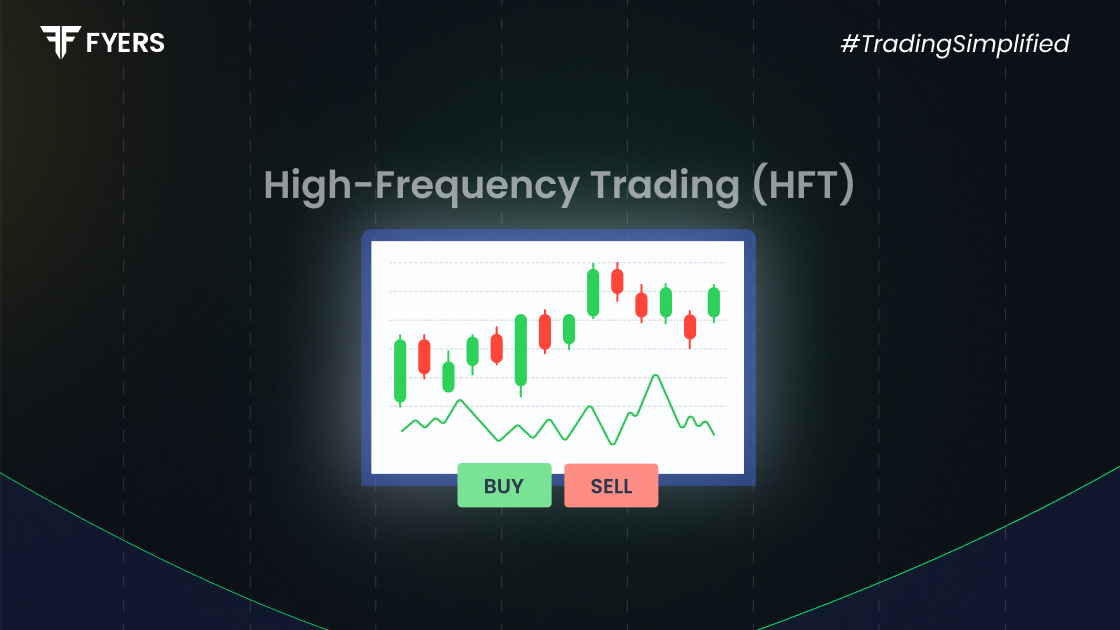

 24 Jul, 2025
24 Jul, 2025
 4 mins read
4 mins read

High-frequency trading (HFT) is a dominant force in today’s stock markets, shaping how trades are executed, priced, and even regulated. Though it operates behind the scenes, HFT has had a major impact on liquidity, price discovery, and market efficiency.
This blog explains what high-frequency trading is, how it works, what kind of software and infrastructure powers it, and the regulatory debate surrounding it—all with a focus on true insights for learners, investors, and finance professionals.
High-frequency trading refers to the use of powerful algorithms and high-speed systems to execute a large number of orders within fractions of a second. It is a subset of algorithmic trading that relies on minimal holding periods and lightning-fast execution.
HFT companies typically operate in equities, futures, currencies, and derivatives markets, exploiting short-lived price inefficiencies. They aim to make small profits from each trade, but the sheer volume results in significant overall gains.
The defining features of HFT include:
High order-to-trade ratios
Low latency execution (microseconds)
Use of co-location and direct market access
Proprietary trading strategies (non-client based)
HFT systems monitor multiple markets simultaneously using real-time data feeds. Once the algorithm detects an arbitrage opportunity or price inefficiency, it sends trade orders immediately—sometimes faster than a blink of an eye.
Here’s a simplified example:
Stock A is trading at ₹100 on NSE and ₹100.20 on BSE.
An HFT system spots the 20 paise difference.
It instantly buys on NSE and sells on BSE, locking in the profit before others can react.
Speed is everything. These systems rely on:
Low latency networks
Direct links to exchanges
Advanced servers with co-location
That’s why high frequency trading companies often set up infrastructure physically closer to stock exchanges to gain even a millisecond’s edge.
HFT is not one single strategy—it’s a collection of algorithms that execute based on pre-set conditions. Common HFT algo trading strategies include:
HFTs place buy and sell orders simultaneously to earn the bid-ask spread. This provides liquidity to markets.
Algorithms identify temporary price divergences between correlated securities and profit when the prices revert.
Some HFTs trade based on news releases, earnings, or economic data, reacting within milliseconds.
Exploiting price differences across exchanges before they sync—one of the most controversial yet common HFT methods.
Each strategy depends on the speed and intelligence of the algorithm, often developed in-house by quants and engineers.
HFT firms use custom-built HFT trading software and low-latency infrastructure. These tools are designed to process large datasets, make decisions, and execute trades—all within microseconds.
Key components include:
Co-location services (placing servers inside exchange data centres)
FPGA hardware (Field Programmable Gate Arrays for ultra-low latency)
High-performance coding languages like C++, Rust, and Python
Real-time market data feeds from exchanges
Most top HFT firms build their own trading platforms for security and speed. Even milliseconds matter—so reducing network latency is a top priority.
HFT has drawn criticism for contributing to market volatility and creating an uneven playing field. Events like the Flash Crash of 2010 highlighted how these systems can amplify panic selling.
Regulators worldwide, including SEBI in India, have placed checks such as:
Order-to-trade ratio limits
Penalties for excessive messaging
Co-location monitoring
Time-stamping to track order placement
In India, HFT algo trading is legal but tightly regulated under SEBI’s guidelines to promote fairness and transparency. However, concerns still remain about the dominance of a few firms with superior infrastructure.
Improves market liquidity
Reduces bid-ask spreads
Enhances price efficiency
Enables faster trade execution
Can cause sudden volatility
May disadvantage retail investors
Regulatory complexity
Expensive infrastructure limits participation
While high frequency trading companies claim to improve market quality, critics argue they prioritise profit over stability, especially during uncertain times.
High-frequency trading is now deeply embedded in global markets, including India’s. With its ability to execute thousands of trades per second, it has reshaped how markets function. However, as the debate continues between efficiency and fairness, regulators must balance innovation with investor protection.
For traders and finance professionals, understanding HFT’s mechanics and implications is essential—not just to compete, but to navigate a market increasingly dominated by machines.
High frequency trading is a type of algorithmic trading where computers make thousands of trades per second to profit from small market movements.
Top HFT firms globally include Citadel Securities, Tower Research, Two Sigma, Jane Street, and Jump Trading. In India, firms like iRage and Edelweiss are active in this space.
HFT firms use low-latency custom software built in languages like C++ or Python, along with high-speed data feeds and co-located servers.
Yes, HFT is legal in India but regulated by SEBI. Exchanges also monitor co-location and trading activity to prevent misuse.
Calculate your Net P&L after deducting all the charges like Tax, Brokerage, etc.
Find your required margin.
Calculate the average price you paid for a stock and determine your total cost.
Estimate your investment growth. Calculate potential returns on one-time investments.
Forecast your investment returns. Understand potential growth with regular contributions.